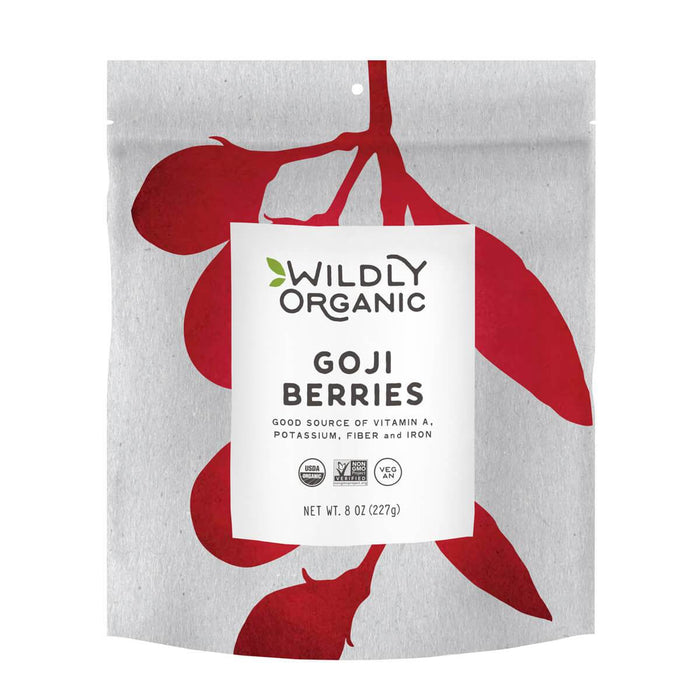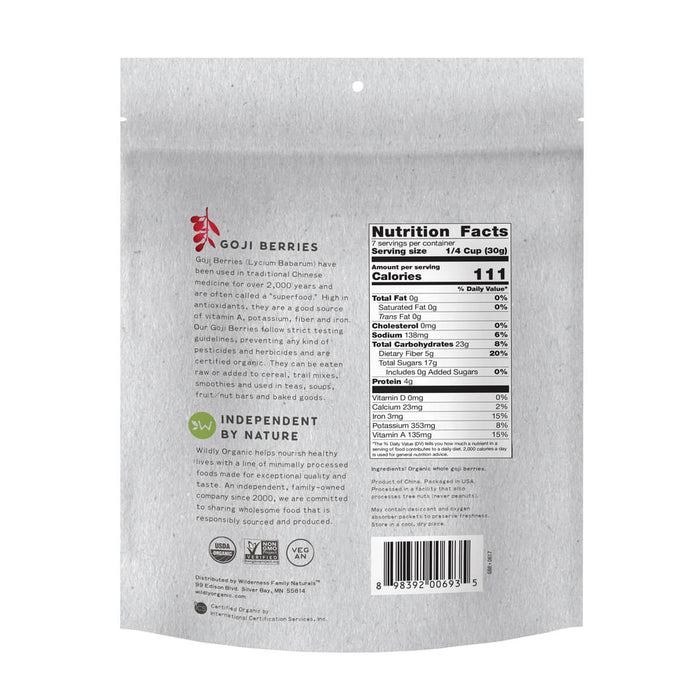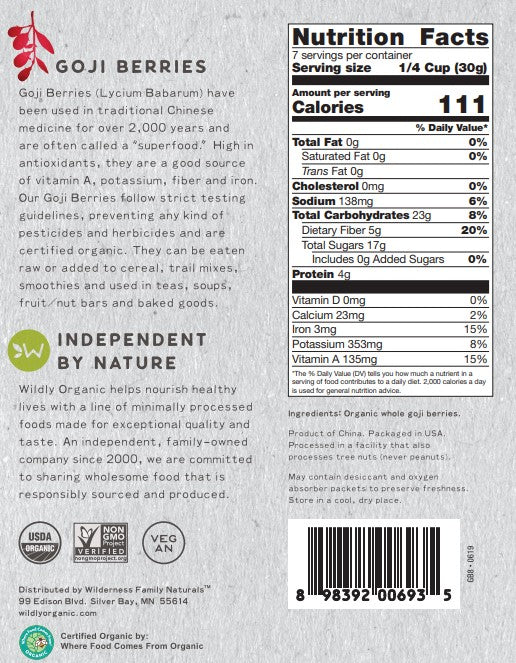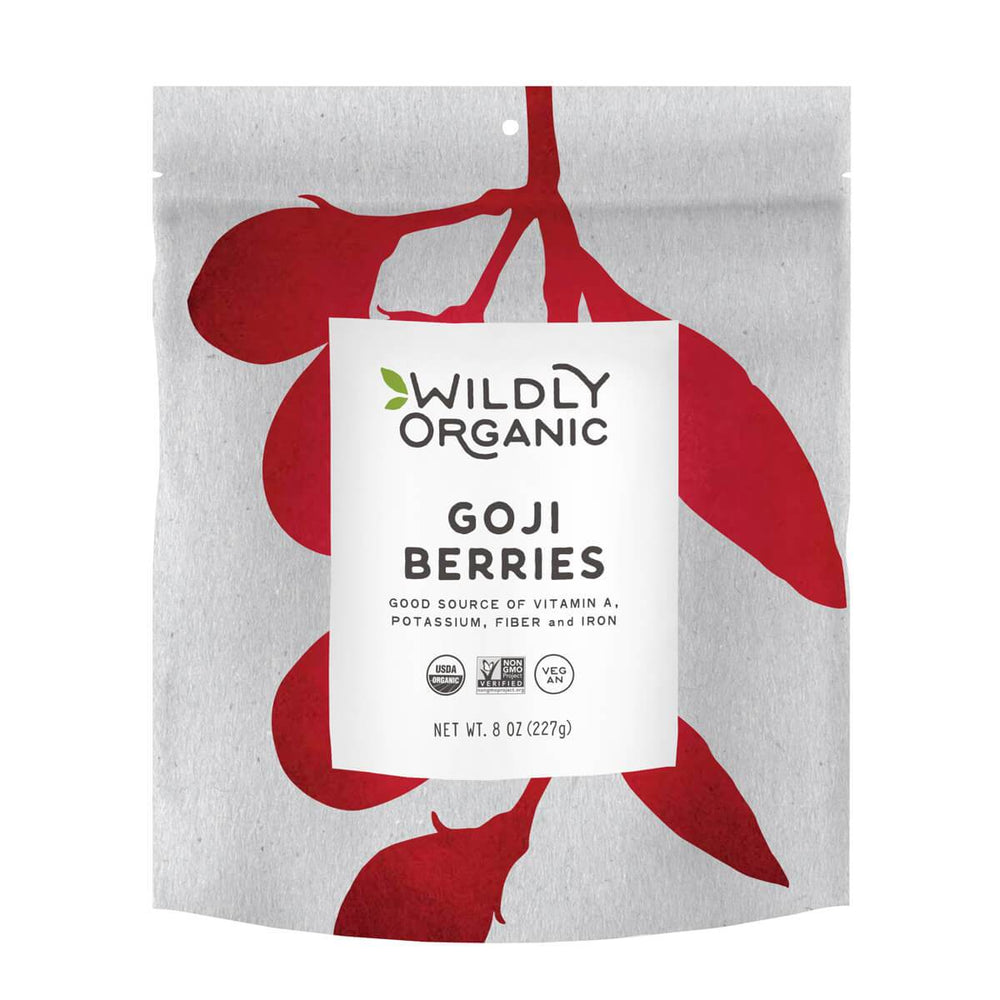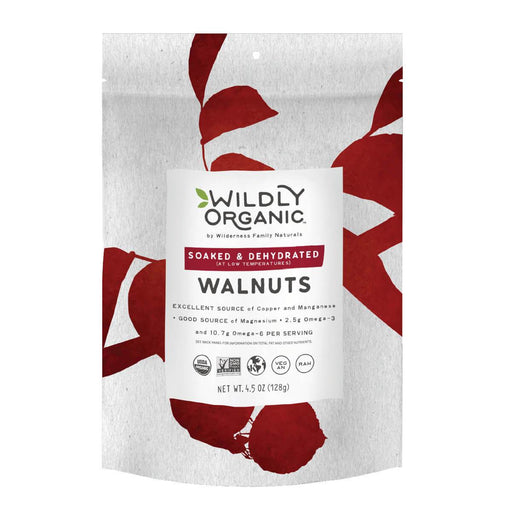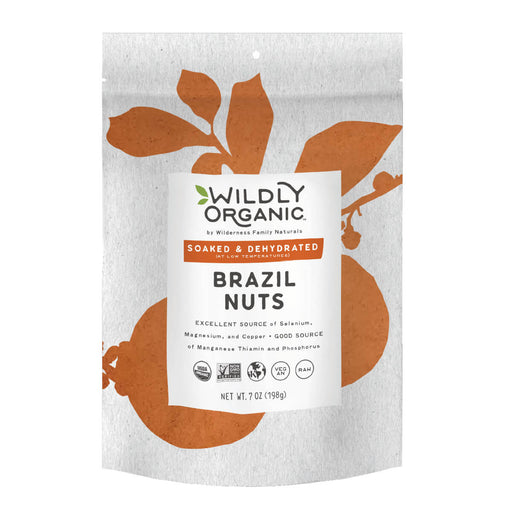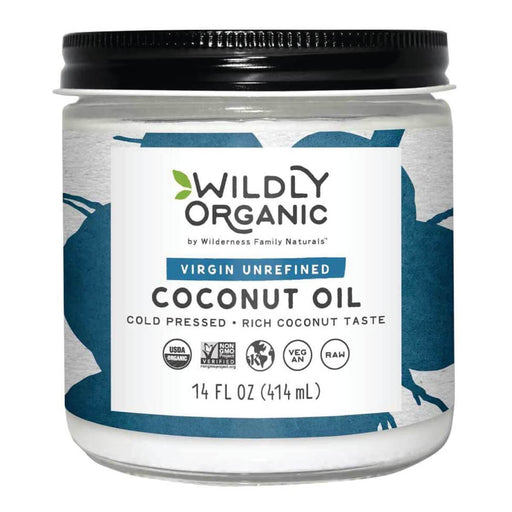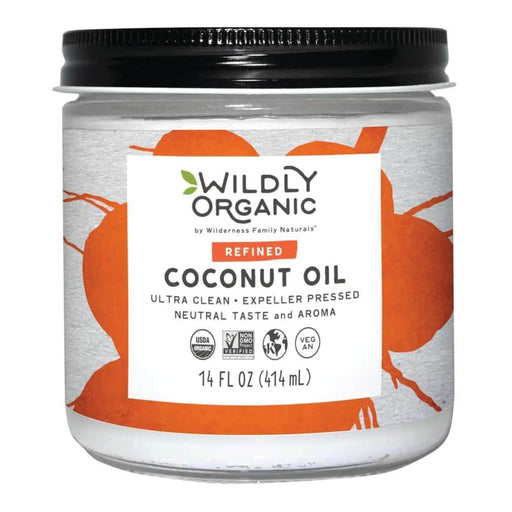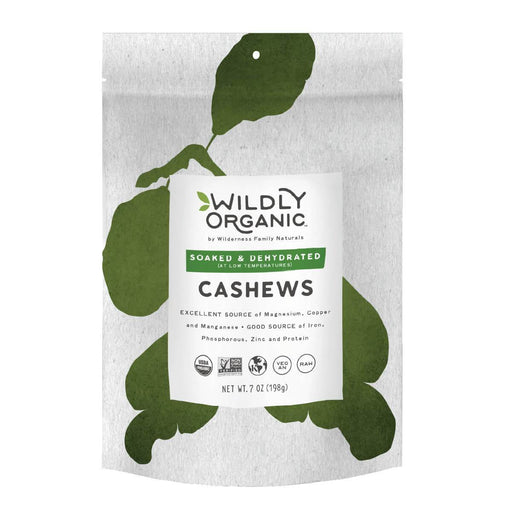Wildly Organic’s goji berries for sale are never sprayed with herbicides or pesticides and the berries are not fumigated, sweetened, or adulterated in any way. The goji berries are dried using large commercial driers inspected by organic certifiers.
Not only do our dried goji berries have the organic certification and other inspections, but before we purchase these goji berries we have them tested for multiple organic compounds, which are found in America, Asia, and Europe. We want positive assurance that these berries are chemical-free, and only if they pass this test are they shipped to America.
Meal- and Snack-Friendly
These certified-organic goji berries have been tested for multiple pesticides and herbicides to prove they do not contain any unwanted chemicals! Our goji berries have a low moisture content which gives them a long shelf life and preserves their nutrients. They easily re-hydrate when added to water, yet can be eaten as a snack right out of the bag like our other organic dried fruit.
Whole, naturally-dried goji berries are about the size of a raisin. Though not as sweet as raisins, they are not tart like sour cherries or cranberries, either. Honestly, there is no fruit in the American diet that tastes similar to a goji berry, but because they are neither sweet nor tart they blend well in savory dishes (such as vegetable soups and casseroles) and equally as well in sweet dishes (such as fruit pies, relishes, and jams).
Storing Goji Berries
These organic goji berries are dried to a very low moisture content giving them the longest shelf-life possible. Some are actually crunchy. This is done to reduce oxidation, degradation, and inhibit fermentation of the berries. They can be stored at room temperature out of sunlight. Since they come in resealable foil bags, this can easily be done by simply placing them in a cupboard or pantry.
How Do I Use Organic Goji Berries?
In China and Tibet, the berries are usually eaten raw, made into teas, or added to hot cereals or sauces, dips, and dressings. If you look for Asian recipes using dried goji berries, you will find such things as chicken soups or warm hot grain cereal that has goji berries added to it. Some countries make goji berry tea by boiling herbs and the goji fruit in water.
If you look at recipes from the U.S., you will find many people like to soak their goji berries overnight (or for at least 15-20 minutes to soften them) and whip them in a blender in the morning. This "goji puree" is then the base for a smoothie or delicious drink.
Buying Organic Goji Berries
Lycium barbarum is the genus and species (latin name) for the true goji berry. This berry predominantly grows in an area referred to as the "goji belt" which is located in northern China and flows into some mountainous areas of Tibet. Nature does not recognize political boundaries so the actual country is not as important as the soil and climate conditions.
Organic goji berries sold out of the "goji belt" are available in four grades — ‘super’, ‘king’, ‘special’, and ‘grade A’. The most expensive and the largest are the ‘super’ grade. ‘Super’ grade berries are 41% more expensive than ‘grade A’. To be classified as this size, there are approximately 240 berries per 50 grams. By contrast, there are approximately 480 grade A berries per 50 grams. The largest berries are produced by the longest established bushes/vines. The longer-established the bushes, the better quality the berry. This is very much like grapes used to make wine.
Our Delicious Goji Berries for Sale
Optimal dryness for our goji berries yields approximately 10.0% moisture content. This ensures a tasty, ready to eat berry with a long shelf life. Organic goji berries are harvested during a six week period in the fall with a short, much smaller harvest season in July preceding it to catch the early berries. These berries must be dry enough to preserve them until the next harvest a year later.
Prior to figuring out where to buy goji berries, we sampled goji berries from a number of suppliers. Since that time, we have sampled even more. Originally, the berries from most companies in the U.S. had higher moisture contents and began to taste fermented as the year progressed, so that by August, we could find no moist plump goji berries that did not taste fermented.
By contrast, the drier berries, like the goji berries for sale at Wildly Organic, after 2 years of storage, still did not taste fermented. This is the sole reason we have chosen drier berries. They readily plump up when soaked in water and can be easily blended into a goji puree. They also soften quickly when put into soups or cooked cereal, like oatmeal, yet they store very well.
Even though there is much you can do with organic goji berries, most people in the U.S. just eat them as they are — right out of the bag. Shop goji berries, cacao products, coconut oils, and more now and get free shipping on orders over $49!
Frequently Asked Questions
We’re happy to answer some of the most popular questions you might have about our goji berries!
What is the goji berry good for?
Organic goji berries have been used in recipes for hundreds of years. In some countries, they’re believed to lengthen your lifespan. The goji fruit is filled with protein, vitamins A and C, riboflavin, potassium, magnesium, and iron. Goji berries not only have these nutrients and micronutrients in them, they’re also delicious and easy to add to your daily recipes.
We love adding goji berries to oatmeal, smoothie bowls, trail mixes, granola, and yogurt bowls. There are so many possibilities.
How many organic goji berries should you eat a day?
We recommend consuming no more than about a handful of dried goji berries a day which is about 20 to 30 grams. Eating too many goji berries may cause adverse side effects such as stomach cramps or loose bowels. You may also want to consult your doctor before eating goji berries if you have concerns with diabetes or blood pressure.
Are goji berries really a superfood?
Absolutely! People use the term superfood to denote foods that have many health benefits. Of course, the purported health benefits of goji berries need to be backed up by science, but studies are showing favorable health effects of this fruit. Organic goji berries may help protect the health of your eyes, provide immune system support, stabilize your blood sugar, improve sleep, and prevent liver damage.
Are dried goji berries full of sugar?
Goji berries actually have less sugar than raisins, making them a good substitute and snack. Their fiber and protein content also ensures that your body absorbs and processes the sugar slowly, which may be good for diabetics and anyone with insulin resistance.
*These statements have not been evaluated by the Food and Drug Administration. These products are not intended to diagnose, treat, cure, or prevent any disease.
- China
